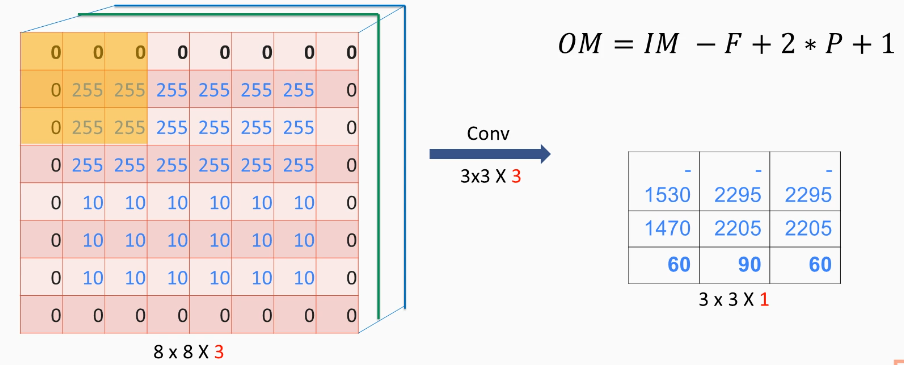Stride just increases the step size of this convolution window, which we saw previously:

Instead of going one step, we can go two steps, as follows:

And we do the same thing each time until we reach the position in the bottom-right corner. Notice how the dimension of the output matrix was shrunk to 3 x 3 x 1, and if we increase the stride again, we may end up even with a smaller matrix. This formula has now changed a bit, so we just divide it by the stride:

This division actually shows that the stride can dramatically decrease the dimension numbers of the matrix. Let's try to apply this formula once again:
IM=6, F=3, stride S=2:

But we take the 2 and have this as the formula:

Basically that's it for padding and stride, and these two operations actually give us a lot of flexibility. We can play with these three parameters, and from there we can have what we want, which as an output matrix dimension, rather than getting the default behavior of the convolution, which is reduced by the first formula we already saw.
We're now ready to learn about a new layer, called the pooling layers; although they're similar to the convolution layer, they introduce a slightly different operation and also have different characteristics.
